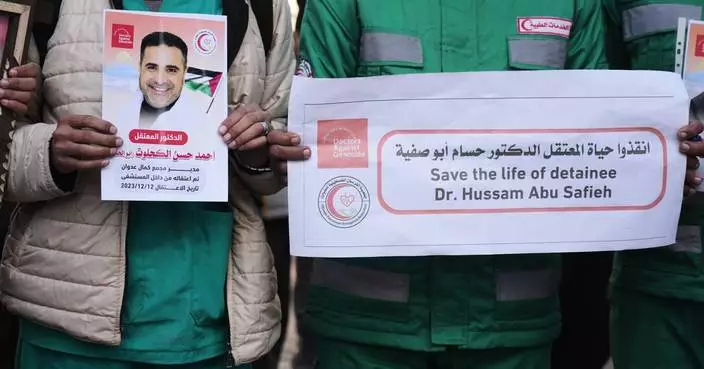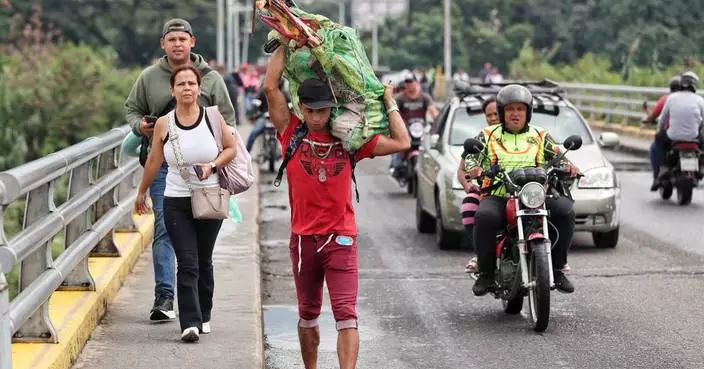The death toll in India’s capital from riots last week between Hindus and Muslims rose to 46, officials said Monday, a day after false rumors of new violence led to panicked calls to police in many parts of the city.
The riots in New Delhi began over a disputed new citizenship law, which led to clashes in which hundreds were injured and houses, shops, mosques, schools and vehicles were set on fire.
Click to Gallery
Opposition Congress party lawmakers shout slogans demanding resignation of Indian Home Minister Amit Shah during a protest in the Parliament premises against last week's deadly communal riots in New Delhi, India, Monday, March 2, 2020. (AP Photo)
Congress party workers shout slogans and burn an effigy of Indian Home Minister Amit Shah as they protest against last week's deadly communal riots in New Delhi, India, Monday, March 2, 2020. (AP PhotoManish Swarup)
Police detain Congress party workers during a protest against last week's deadly communal riots in New Delhi, India, Monday, March 2, 2020. (AP PhotoManish Swarup)
Police detain Congress party workers during a protest against last week's deadly communal riots in New Delhi, India, Monday, March 2, 2020. (AP PhotoManish Swarup)
Tensions between Hindu hard-liners and Muslims protesting the Hindu-first policies of Prime Minister Narendra Modi’s government had been building for months when the violence exploded a week ago Sunday, the eve of U.S. President Donald Trump’s state visit to India.

Opposition Congress party lawmakers shout slogans demanding resignation of Indian Home Minister Amit Shah during a protest in the Parliament premises against last week's deadly communal riots in New Delhi, India, Monday, March 2, 2020. (AP Photo)
Apart from a single tweet after the riots had almost ended, Modi has been publicly silent on the violence.
His powerful home minister, Amit Shah, has accused opposition parties of inciting the riots by spreading misinformation about the citizenship law, which fast-tracks naturalization for religious minorities from several neighboring countries but not Muslims.
The rumors spreading on Sunday included reports of armed groups marching in neighborhoods while chanting slogans, and houses being set on fire.
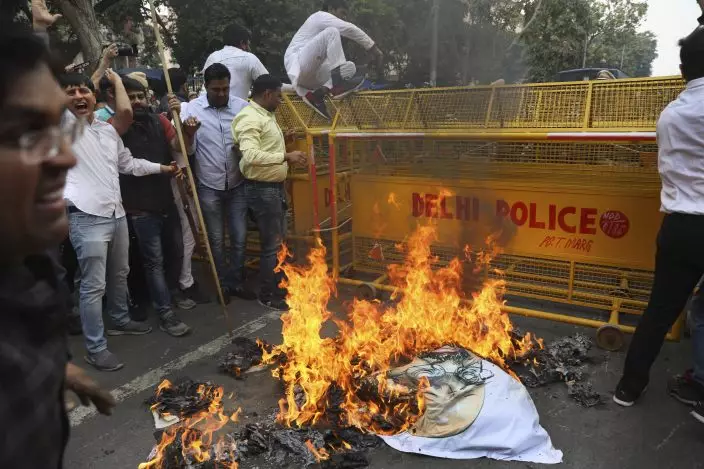
Congress party workers shout slogans and burn an effigy of Indian Home Minister Amit Shah as they protest against last week's deadly communal riots in New Delhi, India, Monday, March 2, 2020. (AP PhotoManish Swarup)
The panic subsided when police reached out to both Hindu and Muslim religious leaders and asked them to help maintain calm in their neighborhoods. Police also issued statements and some lawmakers took to the streets to reassure people that the situation was normal.
On Monday, India’s top court agreed to hear cases filed by riot victims accusing leaders of Modi’s Bharatiya Janata Party of hate speech. Some of the victims accuse Kapil Mishra, a local leader of Modi’s party who lost his Delhi state assembly seat in recent elections, of stoking the violence.
Mishra had demanded at a rally that police shut down a Muslim-led protest in the city or else he and his followers would do it themselves.
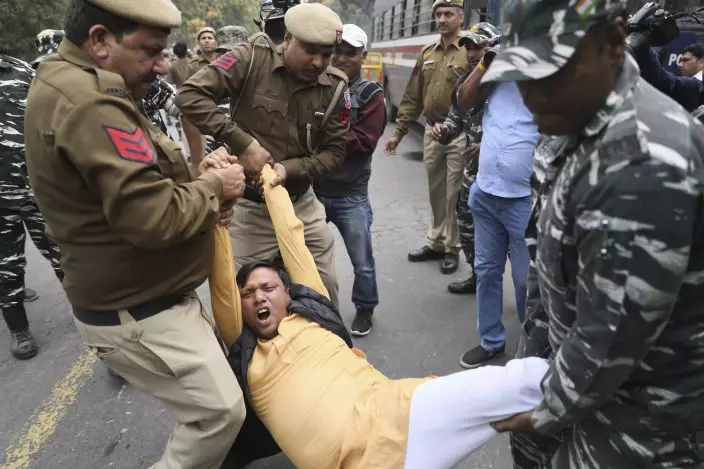
Police detain Congress party workers during a protest against last week's deadly communal riots in New Delhi, India, Monday, March 2, 2020. (AP PhotoManish Swarup)
Hours later, Hindus and Muslims fought each other with guns and swords, metal rods and axes, leaving the streets where the rioting occurred resembling a war zone.
The violence had largely subsided by Wednesday, but the Indian capital has remained on edge.
Most of the dead and injured were Muslims, with thousands fleeing their homes in fear.
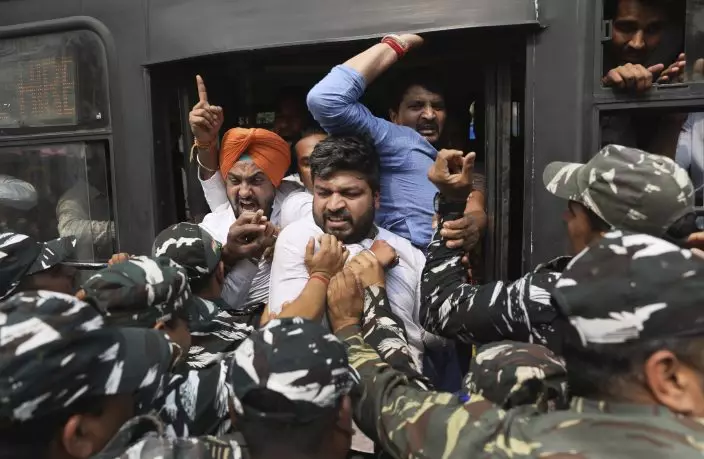
Police detain Congress party workers during a protest against last week's deadly communal riots in New Delhi, India, Monday, March 2, 2020. (AP PhotoManish Swarup)
Authorities are yet to provide an official account of what sparked the violence. Police spokesman Manjeet Singh Randhawa did not respond to repeated questions about how many of the hundreds of people detained in the riots had been charged.
The violence is the latest in a long line of communal clashes that date to the British partition of the Indian subcontinent in 1947, when the country was split into secular, Hindu-majority India and the Islamic state of Pakistan.
WASHINGTON (AP) — President Donald Trump has arrived at a delicate moment as he weighs whether to order a U.S. military response against the Iranian government as it continues a violent crackdown on protests that have left nearly 600 dead and led to the arrests of thousands across the country.
The U.S. president has repeatedly threatened Tehran with military action if his administration found the Islamic Republic was using deadly force against antigovernment protesters. It's a red line that Trump has said he believes Iran is “starting to cross” and has left him and his national security team weighing “very strong options.”
But the U.S. military — which Trump has warned Tehran is “locked and loaded” — appears, at least for the moment, to have been placed on standby mode as Trump ponders next steps, saying that Iranian officials want to have talks with the White House.
“What you’re hearing publicly from the Iranian regime is quite different from the messages the administration is receiving privately, and I think the president has an interest in exploring those messages,” White House press secretary Karoline Leavitt told reporters Monday. “However, with that said, the president has shown he’s unafraid to use military options if and when he deems necessary, and nobody knows that better than Iran.”
Hours later, Trump announced on social media that he would slap 25% tariffs on countries doing business with Tehran “effective immediately” — his first action aimed at penalizing Iran for the protest crackdown, and his latest example of using tariffs as a tool to force friends and foes on the global stage to bend to his will.
China, the United Arab Emirates, Turkey, Brazil and Russia are among economies that do business with Tehran. The White House declined to offer further comment or details about the president’s tariff announcement.
The White House has offered scant details on Iran's outreach for talks, but Leavitt confirmed that the president's special envoy Steve Witkoff will be a key player engaging Tehran.
Meanwhile, Vice President JD Vance, Secretary of State Marco Rubio and key White House National Security Council officials began meeting Friday to develop a “suite of options,” from a diplomatic approach to military strikes, to present to Trump in the coming days, according to a U.S. official familiar with the internal administration deliberations. The official was not authorized to comment publicly and spoke on the condition of anonymity.
Trump told reporters Sunday evening that a “meeting is being set up” with Iranian officials but cautioned that “we may have to act because of what’s happening before the meeting.”
“We’re watching the situation very carefully,” Trump said.
Demonstrations in Iran continue, but analysts say it remains unclear just how long protesters will remain on the street.
An internet blackout imposed by Tehran makes it hard for protesters to understand just how widespread the demonstrations have become, said Vali Nasr, a State Department adviser during the early part of the Obama administration, and now professor of international affairs and Middle East studies at Johns Hopkins University.
“It makes it very difficult for news from one city or pictures from one city to incense or motivate action in another city,” Nasr said. “The protests are leaderless, they're organization-less. They are actually genuine eruptions of popular anger. And without leadership and direction and organization, such protests, not just in Iran, everywhere in the world — it’s very difficult for them to sustain themselves.”
Meanwhile, Trump is dealing with a series of other foreign policy emergencies around the globe.
It's been just over a week since the U.S. military launched a successful raid to arrest Venezuela's Nicolás Maduro and remove him from power. The U.S. continues to mass an unusually large number of troops in the Caribbean Sea.
Trump is also focused on trying to get Israel and Hamas onto the second phase of a peace deal in Gaza and broker an agreement between Russia and Ukraine to end the nearly four-year war in Eastern Europe.
But advocates urging Trump to take strong action against Iran say this moment offers an opportunity to further diminish the theocratic government that's ruled the country since the Islamic revolution in 1979.
The demonstrations are the biggest Iran has seen in years — protests spurred by the collapse of Iranian currency that have morphed into a larger test of supreme leader Ayatollah Ali Khamenei's repressive rule.
Iran, through the country’s parliamentary speaker, has warned that the U.S. military and Israel would be “legitimate targets” if Washington uses force to protect demonstrators.
Some of Trump's hawkish allies in Washington are calling on the president not to miss the opportunity to act decisively against a vulnerable Iranian government that they argue is reeling after last summer's 12-day war with Israel and battered by U.S. strikes in June on key Iranian nuclear sites.
Sen. Lindsey Graham, R-S.C., said on social media Monday that the moment offers Trump the chance to show that he's serious about enforcing red lines. Graham alluded to former Democratic President Barack Obama in 2012 setting a red line on the use of chemical weapons by Syria's Bashar Assad against his own people — only not to follow through with U.S. military action after the then-Syrian leader crossed that line the following year.
“It is not enough to say we stand with the people of Iran,” Graham said. “The only right answer here is that we act decisively to protect protesters in the street — and that we’re not Obama — proving to them we will not tolerate their slaughter without action.”
Former Republican House Speaker Newt Gingrich, another close Trump ally, said the “goal of every Western leader should be to destroy the Iranian dictatorship at this moment of its vulnerability.”
“In a few weeks either the dictatorship will be gone or the Iranian people will have been defeated and suppressed and a campaign to find the ringleaders and kill them will have begun,” Gingrich said in an X post. “There is no middle ground.”
Indeed, Iranian authorities have managed to snuff out rounds of mass protests before, including the “Green Movement” following the disputed election in 2009 and the “woman, life, freedom” protests that broke out after 22-year-old Mahsa Amini died in custody of the state’s morality police in 2022.
Trump and his national security team have already begun reviewing options for potential military action and he is expected to continue talks with his team this week.
Behnam Ben Taleblu, senior director of the Iran program at the Foundation for Defense of Democracies, a hawkish Washington think tank, said “there is a fast-diminishing value to official statements by the president promising to hold the regime accountable, but then staying on the sidelines.”
Trump, Taleblu noted, has shown a desire to maintain “maximum flexibility rooted in unpredictability” as he deals with adversaries.
“But flexibility should not bleed into a policy of locking in or bailing out an anti-American regime which is on the ropes at home and has a bounty on the president’s head abroad,” he added.
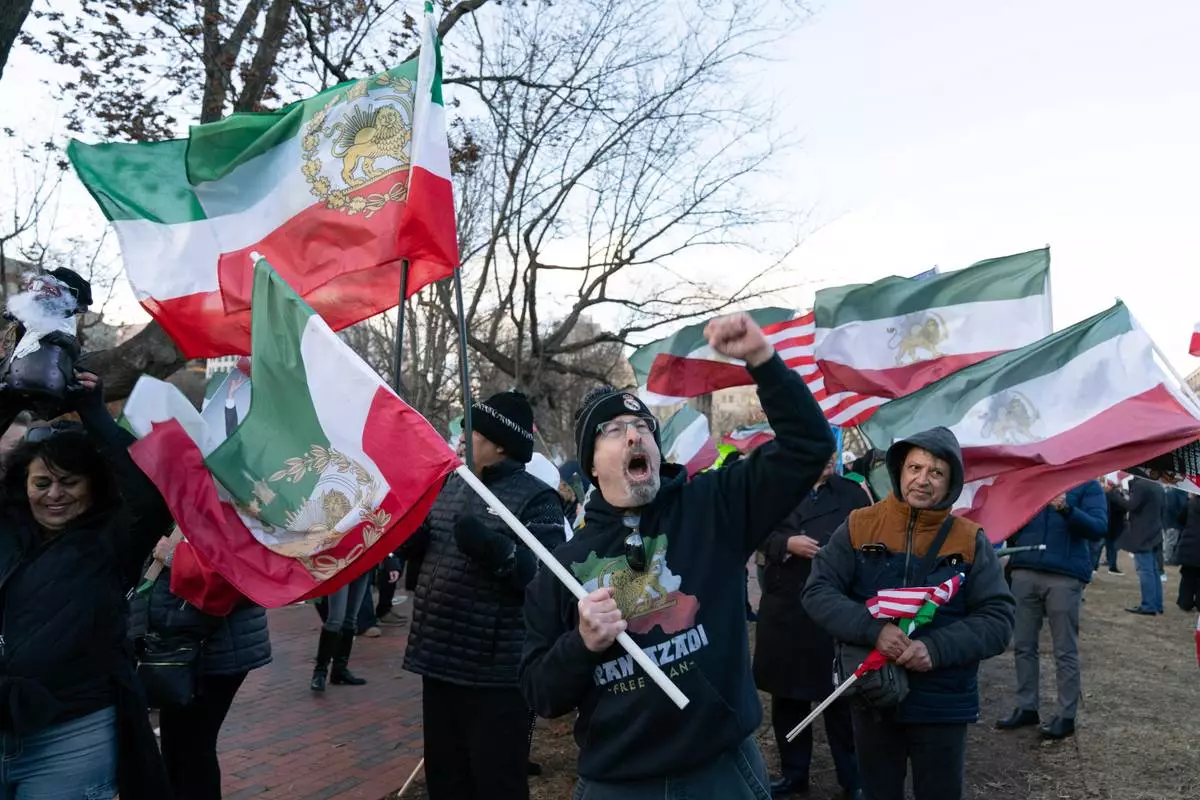
Activists take part in a rally supporting protesters in Iran at Lafayette Park, across from the White House, in Washington, Sunday, Jan. 11, 2026. (AP Photo/Jose Luis Magana)
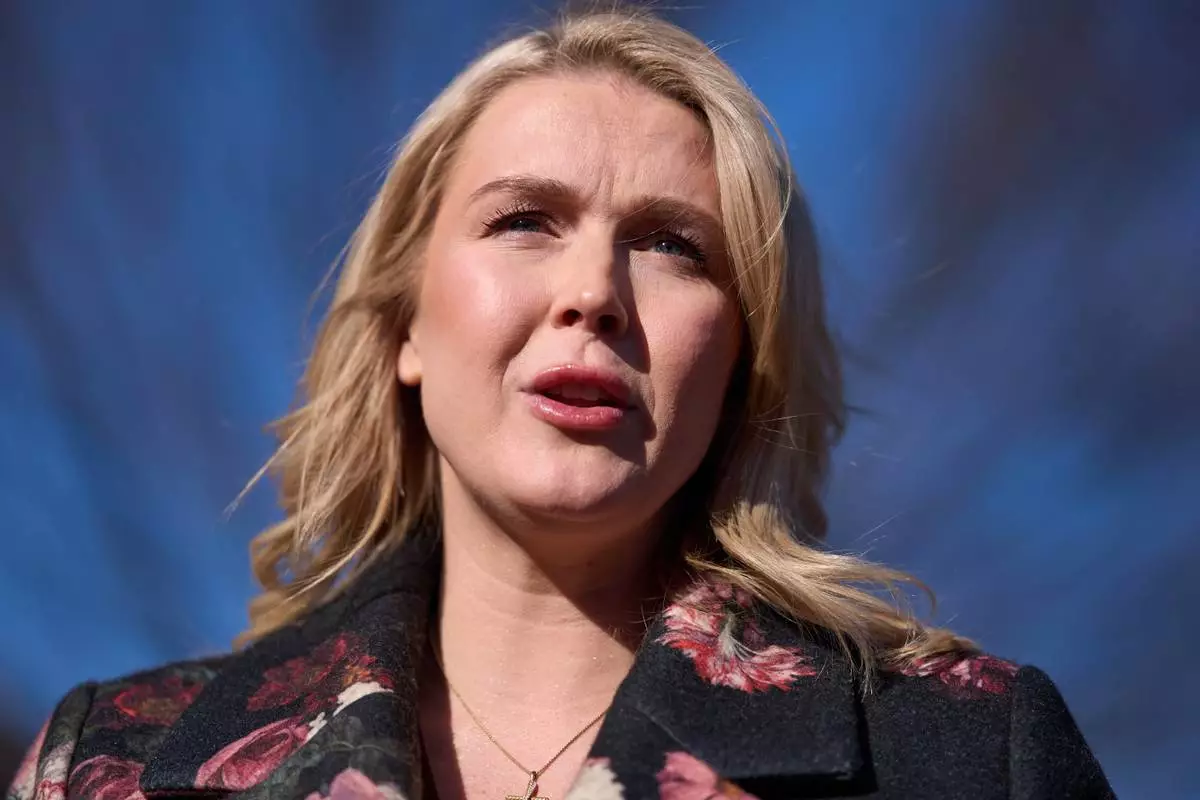
White House press secretary Karoline Leavitt speaks with reporters at the White House, Monday, Jan. 12, 2026, in Washington. (AP Photo/Evan Vucci)

President Donald Trump waves after arriving on Air Force One from Florida, Sunday, Jan. 11, 2026, at Joint Base Andrews, Md. (AP Photo/Julia Demaree Nikhinson)











